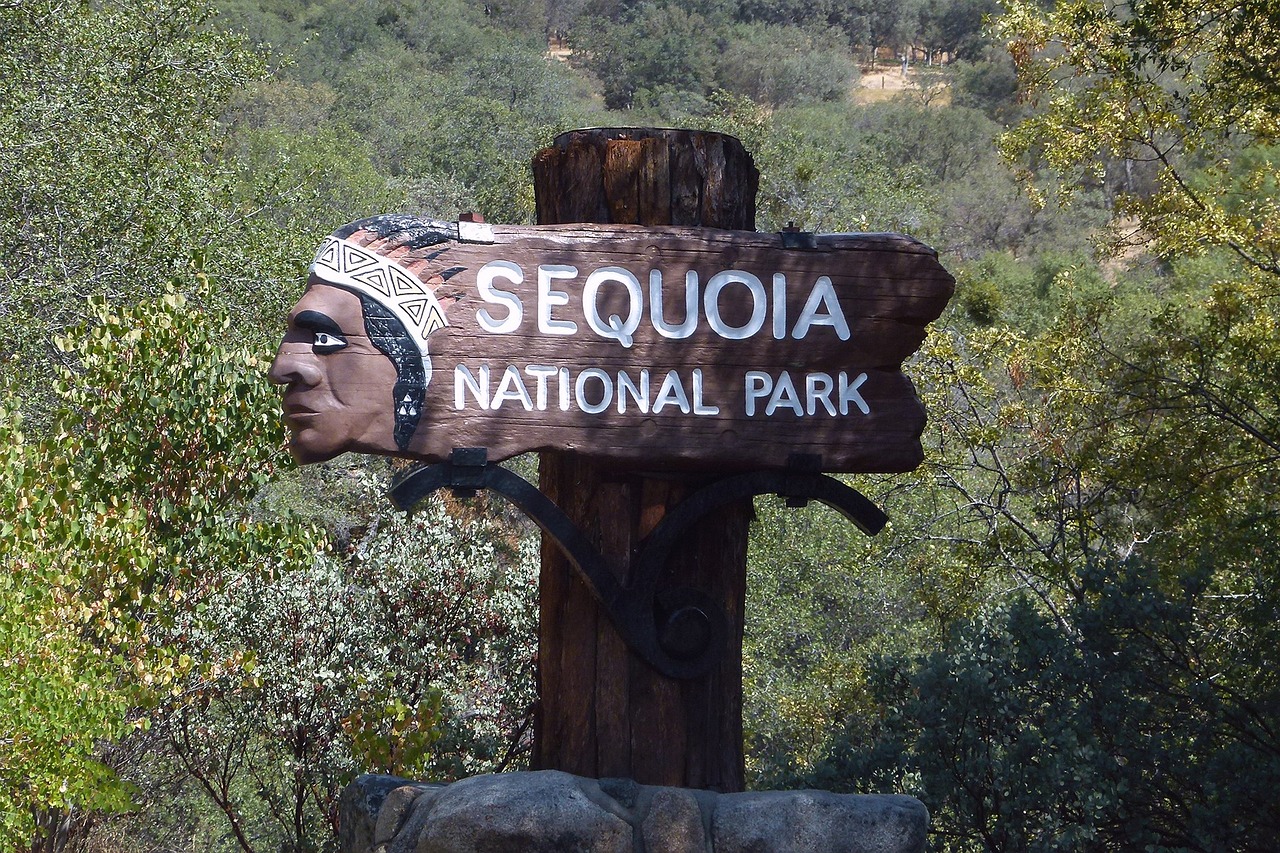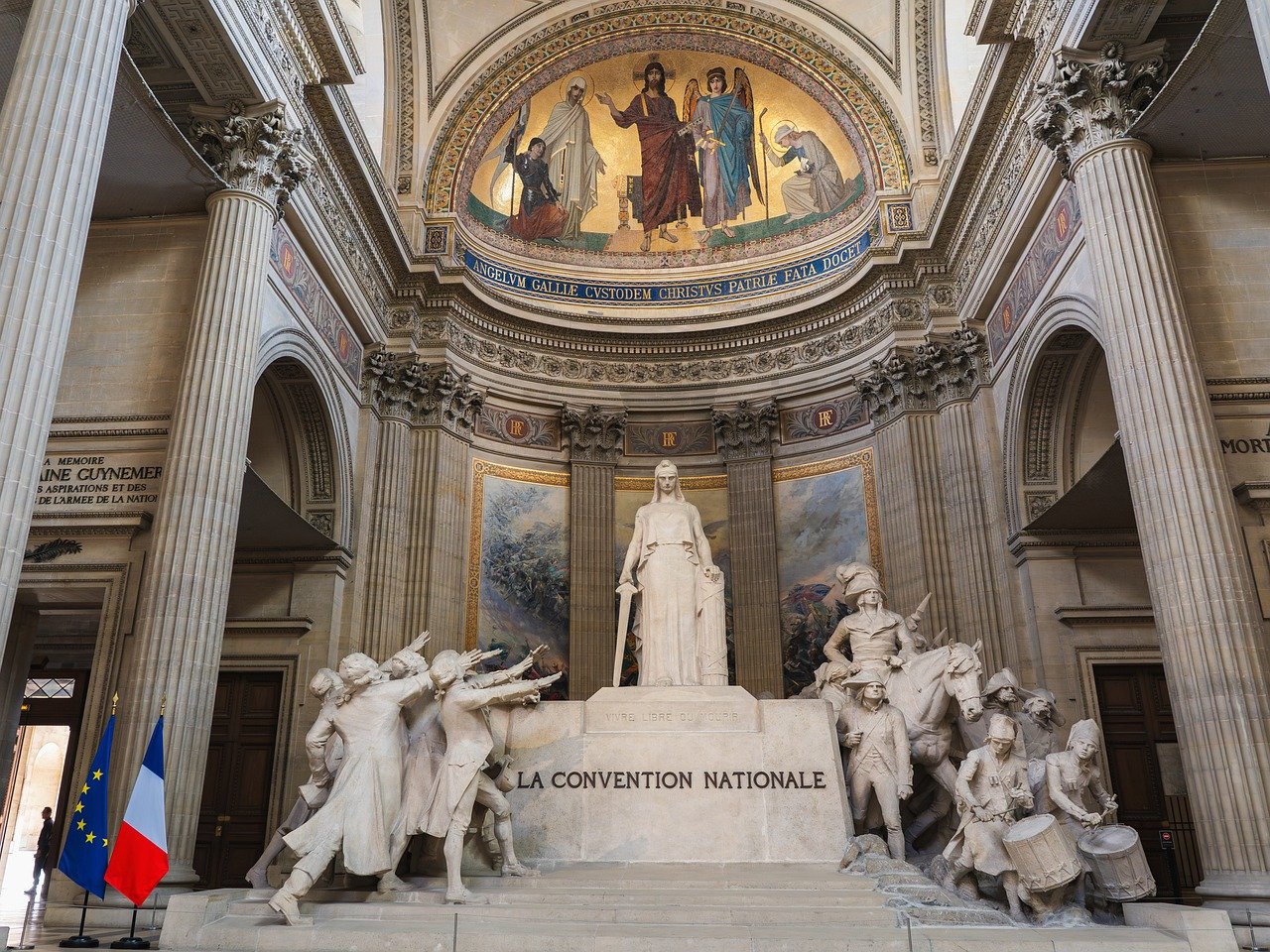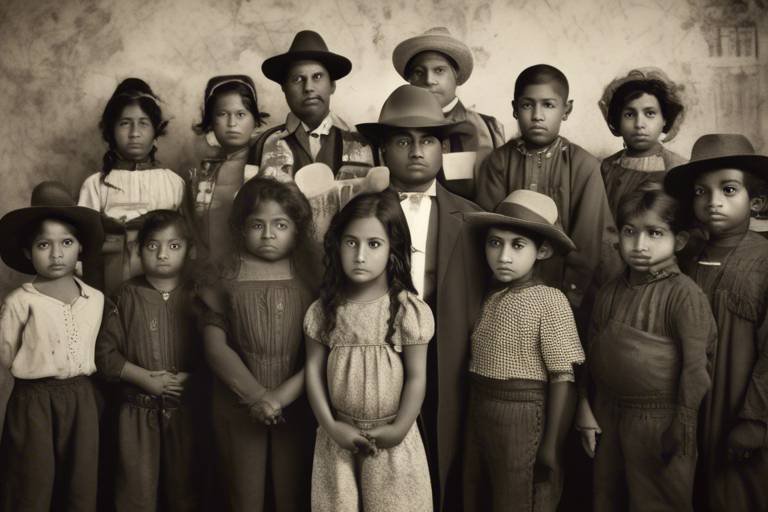The Impact of National Identity on Heritage Preservation
National identity plays a crucial role in the preservation and conservation of a country's cultural heritage. It serves as a cornerstone in shaping the collective memory and pride of a nation, reflecting its unique history, values, and traditions. When a society identifies strongly with its national heritage, there is a natural inclination to protect and cherish the tangible and intangible aspects that define its cultural identity.
Heritage preservation is not merely about safeguarding historical sites and artifacts; it is about safeguarding a nation's soul, ensuring that future generations can connect with their roots and understand the journey that has led to the present. The preservation of heritage sites acts as a time capsule, allowing us to glimpse into the past and appreciate the rich tapestry of events that have shaped our identity.
Government policies and initiatives play a pivotal role in heritage preservation efforts. Through legislation, funding, and incentives, governments can provide the necessary framework and resources to protect and promote national heritage assets. Official support is essential in ensuring that heritage sites are not only preserved but also accessible to the public, fostering a sense of ownership and pride among citizens.
Legislation and protection measures are crucial in preventing the exploitation and destruction of cultural heritage. Strong legal frameworks are needed to deter illicit activities such as looting and vandalism, ensuring that heritage sites are respected and preserved for future generations to enjoy. Without stringent laws in place, valuable cultural assets are at risk of being lost forever.
Community engagement is another key aspect of heritage preservation. Local communities play a vital role in safeguarding heritage sites through grassroots movements and public participation. When individuals feel connected to their heritage, they are more likely to take an active role in its preservation, contributing to the collective effort of protecting national treasures.
Education and awareness programs are essential in instilling a sense of responsibility towards heritage preservation. Schools, museums, and cultural institutions play a significant role in educating the public about the importance of heritage conservation. By raising awareness and fostering a deeper appreciation for cultural heritage, we can ensure that future generations continue to value and protect our shared legacy.
The social and economic benefits of heritage preservation are manifold. By conserving national heritage assets, countries can attract tourists, create employment opportunities, and enrich their cultural landscape. Heritage preservation not only contributes to the economy but also enhances social cohesion and pride, fostering a sense of belonging and identity among citizens.
Despite the numerous benefits of heritage preservation, there are significant challenges and threats that pose obstacles to safeguarding cultural heritage. Urbanization, climate change, conflicts, and resource constraints are among the many factors that endanger heritage sites around the world. Addressing these challenges requires a concerted effort from governments, communities, and international organizations to ensure the sustainable preservation of our shared heritage.
Globalization has also had a profound impact on national identities and heritage preservation. The spread of global culture and values has led to the erosion of traditional heritage practices and values, resulting in cultural homogenization. As countries strive to balance the forces of globalization with the need to preserve their unique identity, new approaches and strategies must be developed to protect and promote cultural heritage in a rapidly changing world.

Historical Significance of Heritage Preservation
Preserving historical sites and artifacts holds a significant role in upholding a nation's cultural identity and heritage. These tangible and intangible elements serve as a window to the past, allowing present and future generations to connect with their roots and understand the evolution of their society. Historical preservation not only safeguards physical remnants of the past but also preserves the stories, traditions, and values that define a nation's collective identity.
By conserving heritage sites and artifacts, countries can showcase their rich history and cultural diversity, fostering a sense of pride and belonging among their citizens. These preserved treasures serve as educational tools, offering insights into the customs, beliefs, and achievements of previous generations. Through heritage preservation, nations can honor their heritage and pass down valuable knowledge to future descendants.
Furthermore, historical preservation plays a crucial role in promoting tourism and attracting visitors from around the world. Tourists are drawn to destinations with well-maintained historical sites and museums, seeking to immerse themselves in the unique heritage and traditions of a country. By investing in heritage preservation, nations can boost their tourism industry, create economic opportunities, and promote cultural exchange on a global scale.
Overall, the historical significance of heritage preservation lies in its ability to safeguard the past, celebrate cultural diversity, and strengthen national identity. By preserving and conserving historical sites and artifacts, countries can ensure that their rich heritage continues to inspire and educate future generations, shaping a collective sense of pride and belonging.

Government Policies and Initiatives
Exploring how a country's sense of national identity influences the preservation and conservation of its cultural heritage sites, artifacts, and traditions, highlighting the importance of heritage in shaping collective identity and fostering national pride.
Examining the role of preserving historical sites and artifacts in maintaining a nation's cultural identity and heritage, showcasing how these elements contribute to the understanding and appreciation of a country's past.
Government policies and initiatives play a crucial role in the preservation of a country's heritage. By analyzing the impact of government regulations, funding, and incentives on heritage preservation efforts, we can understand the importance of official support in safeguarding and promoting national heritage assets.
Legislation and legal frameworks are essential tools used by governments to protect and conserve cultural heritage sites. These measures are crucial in preventing the destruction and looting of valuable heritage. Stringent laws are necessary to ensure the preservation of our cultural treasures for future generations.
Local communities play a vital role in heritage preservation. Through grassroots movements and public involvement, communities contribute significantly to the protection and promotion of national heritage assets. Their engagement fosters a sense of ownership and responsibility towards preserving our shared heritage.
Educational initiatives and public awareness campaigns are key in instilling a sense of responsibility towards heritage preservation. Schools, museums, and cultural institutions play a crucial role in educating the public about the importance of conserving our heritage. By raising awareness, we can ensure the continued protection of our cultural legacy.
The preservation of heritage not only enriches our cultural landscape but also brings about social and economic benefits. Through heritage preservation, societies can experience enhanced tourism, job creation, and cultural enrichment. By conserving our national heritage assets, we can stimulate economic growth and promote cultural diversity.
Despite efforts to preserve cultural heritage, various challenges and threats persist. Urbanization, climate change, conflicts, and limited resources pose significant obstacles to heritage preservation. Addressing these challenges requires collaborative efforts and innovative solutions to safeguard our heritage for future generations.
Globalization has a profound impact on national identities and heritage preservation. As global culture spreads, traditional heritage practices and values face the risk of being eroded, leading to cultural homogenization. It is essential to strike a balance between embracing global influences and preserving our unique cultural heritage.

Legislation and Protection of Cultural Heritage
Exploring how a country's sense of national identity influences the preservation and conservation of its cultural heritage sites, artifacts, and traditions, highlighting the importance of heritage in shaping collective identity and fostering national pride.
Examining the role of preserving historical sites and artifacts in maintaining a nation's cultural identity and heritage, showcasing how these elements contribute to the understanding and appreciation of a country's past.
Analyzing the impact of government regulations, funding, and incentives on heritage preservation efforts, discussing the importance of official support in safeguarding and promoting national heritage assets.
When it comes to safeguarding cultural heritage, governments play a crucial role in implementing legislation and protective measures. These legal frameworks are essential in preventing the destruction and looting of valuable heritage sites and artifacts. By enacting stringent laws, authorities aim to ensure the preservation of cultural treasures for future generations.
Highlighting the role of local communities in heritage preservation, showcasing how grassroots movements and public involvement contribute to the protection and promotion of national heritage assets.
Discussing the importance of educational initiatives and public awareness campaigns in fostering a sense of responsibility towards heritage preservation, emphasizing the role of schools, museums, and cultural institutions in promoting heritage conservation.
Exploring the positive impacts of heritage preservation on society and the economy, showcasing how tourism, job creation, and cultural enrichment are enhanced through the conservation of national heritage assets.
Identifying the obstacles and risks faced in safeguarding cultural heritage, discussing issues such as urbanization, climate change, conflicts, and lack of resources that pose significant challenges to heritage preservation efforts.
Addressing the impact of globalization on national identities and heritage preservation, examining how the spread of global culture and values can erode traditional heritage practices and values, leading to cultural homogenization.

Community Engagement and Participation
Community engagement and participation play a crucial role in the preservation of national heritage, as they involve the active involvement of local communities in safeguarding and promoting cultural assets. When individuals and groups within a community take ownership of their heritage, it creates a sense of pride and responsibility towards preserving it for future generations.
One effective way to engage the community in heritage preservation is through educational programs that raise awareness about the significance of cultural sites and artifacts. Schools, museums, and cultural institutions can play a key role in educating the public about the importance of heritage conservation and the threats it faces.
Furthermore, involving local residents in decision-making processes regarding heritage sites can ensure that their voices are heard and their concerns are addressed. Community-led initiatives and grassroots movements often result in innovative solutions for preserving heritage in the face of challenges such as urban development and environmental degradation.
By fostering a sense of ownership and pride in their cultural heritage, communities can become powerful advocates for its protection and promotion. When individuals feel connected to their heritage, they are more likely to actively participate in conservation efforts and support initiatives aimed at preserving their shared history.

Education and Awareness Programs
Education and awareness programs play a crucial role in instilling a sense of responsibility and appreciation for heritage preservation among individuals of all ages. These programs are designed to educate the public about the significance of cultural heritage sites and traditions, fostering a deeper connection to the past and a stronger commitment to safeguarding these valuable assets for future generations.
One effective approach is the integration of heritage education into school curricula, exposing students to the history and importance of their country's cultural heritage from a young age. By incorporating interactive learning activities and field trips to historical sites, students can develop a profound understanding of their heritage and its relevance to their identity.
Museums and cultural institutions also play a vital role in raising awareness about heritage preservation through exhibitions, workshops, and guided tours. These initiatives not only showcase the beauty and significance of cultural artifacts but also engage visitors in meaningful discussions about the importance of protecting and conserving these treasures.
Furthermore, community outreach programs that involve local residents in heritage conservation efforts are instrumental in fostering a sense of ownership and pride in preserving national heritage. By organizing volunteer clean-up activities, restoration projects, and heritage awareness campaigns, communities can actively participate in safeguarding their cultural legacy.
Collaboration between educational institutions, government agencies, and non-profit organizations is essential in developing comprehensive heritage education and awareness programs that reach a wide audience. By working together, these stakeholders can leverage their resources and expertise to create impactful initiatives that promote a culture of heritage preservation and appreciation.

Social and Economic Benefits of Heritage Preservation
Preserving a nation's cultural heritage not only safeguards its history and traditions but also brings forth a myriad of social and economic benefits. By conserving historical sites, artifacts, and traditions, countries can unlock opportunities for sustainable development and growth.
One significant social benefit of heritage preservation is the enhancement of cultural identity and pride among the population. When people have access to their country's rich history and heritage, it fosters a sense of belonging and unity. This, in turn, strengthens social cohesion and promotes a shared national identity.
Moreover, heritage preservation plays a crucial role in promoting tourism and attracting visitors from around the world. Historical sites and cultural landmarks become major tourist attractions, generating revenue and creating employment opportunities in the hospitality and tourism sectors. This influx of tourists not only boosts the local economy but also helps in preserving and maintaining heritage sites through funding generated from tourism activities.
Furthermore, the conservation of national heritage assets contributes to the overall well-being of society by providing educational and recreational opportunities. Museums, heritage sites, and cultural events serve as platforms for learning and entertainment, enriching the cultural fabric of communities and fostering a sense of appreciation for the country's history and traditions.
In addition to the social benefits, heritage preservation also yields economic advantages by stimulating investment and revitalizing local economies. Historic preservation projects create jobs in restoration, conservation, and tourism-related industries, thus boosting economic growth and revitalizing heritage-rich areas.

Challenges and Threats to Heritage Preservation
Preserving cultural heritage is a noble endeavor that comes with its fair share of challenges and threats. One of the major obstacles faced in heritage preservation is the rapid pace of urbanization. As cities expand and modernize, historical sites and traditional structures often fall victim to development projects, putting them at risk of destruction or alteration. Balancing the need for urban growth with the preservation of cultural heritage remains a delicate task for many governments and conservationists.
Climate change poses another significant threat to heritage preservation. Rising sea levels, extreme weather events, and natural disasters can wreak havoc on cultural sites, causing irreversible damage to ancient ruins, monuments, and artifacts. Efforts to mitigate the impact of climate change on heritage sites require innovative solutions and proactive measures to safeguard these valuable assets for future generations.
Conflicts and wars also pose a grave danger to cultural heritage. In times of political unrest and armed conflict, heritage sites often become collateral damage, deliberately targeted, or looted for financial gain. The destruction of cultural heritage not only erases tangible links to the past but also undermines the social fabric and identity of affected communities. Protecting heritage during times of conflict requires international cooperation, advocacy, and swift action to prevent irreparable loss.
Furthermore, the lack of resources and funding presents a persistent challenge to heritage preservation efforts. Many heritage sites struggle to secure adequate financial support for conservation projects, maintenance, and skilled personnel. Limited resources can impede the implementation of effective preservation strategies, leaving valuable cultural assets vulnerable to neglect, decay, and deterioration over time. Finding sustainable funding models and garnering public support are crucial steps in overcoming this obstacle and ensuring the long-term preservation of cultural heritage.

Globalization and Cultural Homogenization
Globalization has become a double-edged sword in the realm of heritage preservation, with its impact on cultural homogenization posing a significant threat to national identities worldwide. As borders blur and communication channels widen, traditional values and practices are increasingly at risk of being overshadowed by a globalized, uniform culture. The proliferation of Western ideals and consumerism, facilitated by the interconnectedness of the modern world, has led to the dilution of unique cultural identities and heritage.
Moreover, the rise of mass media and digital technologies has accelerated the spread of homogenized cultural products, further diminishing the distinctiveness of local traditions and customs. As societies become more interconnected, there is a growing concern that the rich tapestry of diverse cultural expressions may be supplanted by a standardized, commercialized version of culture that caters to global tastes and preferences.
One of the key challenges posed by globalization is the erosion of traditional heritage practices and the marginalization of indigenous knowledge systems. As communities strive to adapt to the demands of a globalized world, there is a risk of losing valuable cultural heritage that has been passed down through generations. The commodification of culture for mass consumption, driven by market forces and profit motives, can lead to the commoditization of traditions and the exploitation of cultural resources for commercial gain.
In the face of these challenges, it is imperative for nations to strike a balance between embracing the opportunities presented by globalization and safeguarding their unique cultural heritage. By promoting intercultural dialogue, fostering respect for diversity, and supporting local initiatives that celebrate heritage, countries can resist the tide of cultural homogenization and preserve the richness of their national identities for future generations.
Frequently Asked Questions
- What is the significance of national identity in heritage preservation?
National identity plays a crucial role in heritage preservation as it shapes how a country values and protects its cultural heritage. The sense of pride and connection to one's history often motivates communities and governments to safeguard and promote important heritage sites and artifacts.
- How do government policies impact heritage preservation efforts?
Government policies have a significant influence on heritage preservation by providing regulations, funding, and incentives to support conservation initiatives. These official measures help in safeguarding national heritage assets and promoting cultural richness for future generations.
- What are the challenges faced in heritage preservation?
Heritage preservation encounters various challenges such as urbanization, climate change, conflicts, and resource limitations. These obstacles pose threats to the conservation of cultural heritage, requiring concerted efforts from communities and authorities to overcome them.
- How does globalization affect heritage preservation?
Globalization can impact heritage preservation by promoting cultural homogenization and eroding traditional practices and values. The spread of global culture may pose challenges to maintaining unique national identities and preserving diverse heritage assets.



















